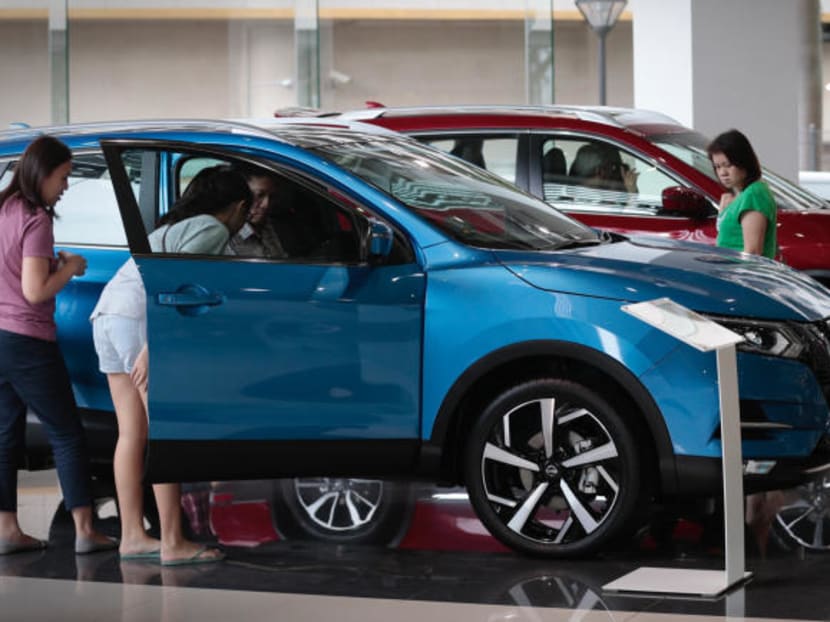Do you need a car? Consider the financial impact of owning one
Along with being one of the classic five “Cs” showing you have made it in Singapore, cars have long fulfilled people’s needs to have flexibility in transport. With Grab putting rides at your fingertips and with better public transport now, it is time to rethink whether you really need a car.

While buying a car used to be almost a rite of passage, more people are considering alternatives and saving money by not getting one and still having the convenience of a car at their fingertips.
Along with being one of the classic five “Cs” showing you have made it in Singapore, cars have long fulfilled people’s needs to have flexibility in transport. With Grab putting rides at your fingertips and with better public transport now, it is time to rethink whether you really need a car.
After buying a flat, the second largest purchase for many people is buying a car. Indeed, high taxes make cars here among the priciest in the world.
While most people justify buying a car based on convenience, another unstated reason for some people has been to show that they have enough money to buy a car.
And realistically, there could be other reasons to buy a car as well. If you frequently need transport at peak hours when Grab is hard to get, or you travel with pets and children, ride-sharing can be difficult. Ride-sharing is also expensive for long distances and doesn’t work if you are hauling furniture around.
THE COST OF OWNING A CAR
Even though cars are convenient, the cost of ownership is high. While prices vary depending on the type of car and driving habits and lots more, an example shows how much you have to pay.
A new Toyota Corolla Altis, for instance, would cost about S$100,000. DBS Bank says just a S$60,000, seven-year car loan at the online promotion rate of 2.28 per cent incurs a total interest of S$9,576.
Buying the car alone would mean doling out an average of about S$9,131 per year. And that’s just the start.
Insurance is still likely to be at least S$600 per year, even if you are an experienced driver with a 50 per cent no-claims discount, and road tax costs S$742.
If you drive the Singapore average of about 16,700km per year and optimistically get 18km per litre, petrol at S$2.29 per litre would cost about S$2,124 a year.
Servicing is about S$500 annually, and parking fees at public housing estates under the Housing and Development Board total at least S$960.
The total cost, then, is about S$14,000 every year.
Yes, you might pay less depending on how you drive or by not taking out a loan. Even then, the cost won’t drop much.
And you may pay even more at Electronic Road Pricing gantries while driving to work, or instance, or for parking if you are a teacher.
Although buying a used car may reduce the direct cost of ownership somewhat, a car still depreciates in value every year and has all the operating cost anyway.
ALTERNATIVES AVAILABLE
Given that owning a car costs so much, it is worth looking at alternatives. And there are plenty of options.
Ride-sharing has become the main mode of transport for many people. Even though Uber left, Grab is charging ahead and Go-Jek is coming in.
If you spend S$15 per trip taking Grab to work and back every day and use it for two trips on the weekend too, Grab would cost about S$900 a month. If you live closer to work or don’t use Grab on weekends, your costs could be even less.
Another option is to rent a car when you need one. You can do so at car-sharing firm Car Club for S$9 per hour, or use Smove for more traditional car rentals at S$50 for three hours.
BlueSG, the electric car-sharing service, costs 33 cents per minute or about S$20 an hour.
All of these services have or plan to have at least about 100 locations around the island where you can pick up a car. If you drive a BlueSG car 30 minutes each way to work and back every day and use a Car Club car for an hour each day on weekends, you would only pay about S$500 per month for your transport. While these rental services may not be as convenient as Grab, they do offer another option.
And the cheapest option, of course, is taking a bus or train. Even going across the island from Tuas to the airport only costs about S$2, so taking the train every day would be about S$120 per month.
OTHER FACTORS TO CONSIDER
While the trade-off between direct cost and the convenience of owning a car is usually most important, there is more than just money to factor into your calculations.
Taking out a loan to buy a car affects the flat you can buy, for instance, because the total debt servicing ration (TDSR) framework includes car loans in the calculations when you get a home loan.
There are hidden costs as well. Researchers at the University of Texas at Austin’s Energy Institute put together a calculator for the United States which includes costs such as the value of your time when you drive to work.
Professionals who get paid by the hour and take Grab, for example, can even earn money by getting work done on the way to the office or returning phone calls from customers.
While buying a car used to be almost a rite of passage, more people are considering alternatives and saving money by not getting one and still having the convenience of a car at their fingertips.
When you look at the financial calculations, and even when you factor in the warm fuzzy feeling of transport availability, not buying a car can be quite attractive.









